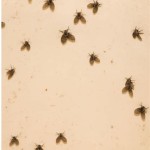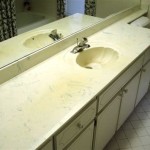Is Black Mold in the Bathroom Dangerous?
Black mold, often identified by its dark, greenish-black color and musty odor, is a common concern in bathrooms due to the consistently damp environment. While not all dark-colored molds are the notorious Stachybotrys chartarum (often referred to as “toxic black mold”), any mold growth in the bathroom warrants attention due to potential health risks and structural damage.
Stachybotrys chartarum produces mycotoxins, which are volatile organic compounds that can become airborne and inhaled. Exposure to these mycotoxins can exacerbate existing respiratory conditions like asthma and allergies, and potentially cause new ones. Symptoms can include coughing, wheezing, nasal congestion, eye irritation, skin rashes, and headaches. Individuals with compromised immune systems are particularly vulnerable to severe health effects.
While the term “toxic black mold” is often used, it’s important to note that the toxicity refers to the mycotoxins produced, not the mold itself. Not all strains of Stachybotrys chartarum produce mycotoxins, and the levels of mycotoxin production can vary depending on environmental factors. However, it is impossible to determine the toxicity of black mold without laboratory analysis, and therefore, caution is always advised.
Other types of mold commonly found in bathrooms, even if not Stachybotrys chartarum, can still present health risks. Many molds produce allergens that can trigger reactions in sensitive individuals. Even non-allergenic molds can irritate the respiratory system, especially in individuals with pre-existing conditions. Prolonged exposure to any type of mold can lead to chronic health problems.
The presence of black mold, or any mold, in the bathroom indicates a moisture problem. Leaky pipes, inadequate ventilation, and condensation are common culprits. Addressing the underlying moisture issue is crucial for effective mold remediation. Simply cleaning the visible mold without addressing the source will likely result in recurring growth.
Small areas of mold growth (less than 10 square feet) can often be addressed with household cleaning solutions and appropriate safety precautions. This involves wearing protective gear such as gloves, goggles, and a N-95 respirator to prevent inhalation of mold spores. Effective cleaning solutions include a bleach solution (one cup of bleach per gallon of water), undiluted white vinegar, or commercial mold cleaners. Affected surfaces should be thoroughly scrubbed and allowed to dry completely.
For larger areas of mold infestation, professional mold remediation is recommended. Professionals possess the expertise and equipment to effectively remove mold, identify and address the source of moisture, and implement preventive measures. They can also perform air quality testing to assess the extent of mold spore contamination.
Preventing mold growth in the bathroom is essential for maintaining a healthy environment. Adequate ventilation is crucial. Running an exhaust fan during and after showers and baths helps to remove excess moisture. Keeping the bathroom clean and dry also inhibits mold growth. Promptly addressing leaks and plumbing issues prevents water buildup that can lead to mold infestation.
Regular inspection of potential problem areas is also important. Check for signs of moisture and mold growth around pipes, faucets, showerheads, and beneath sinks. Caulk and sealant around fixtures should be maintained in good condition to prevent water seepage. Using mildew-resistant paint in the bathroom can further help to deter mold growth.
Properly addressing moisture problems, maintaining adequate ventilation, and implementing regular cleaning practices are key to preventing mold growth and safeguarding the health of those residing in the home. If black mold, or any type of mold, is discovered in the bathroom, prompt action is essential to mitigate potential health risks and prevent further spread.
Identifying the specific type of mold requires laboratory analysis. If health concerns arise or if there is uncertainty about the extent of mold growth, consulting a qualified professional is recommended. Professionals can provide accurate assessment, develop appropriate remediation strategies, and offer guidance on preventing future mold infestations.
Maintaining a clean and dry bathroom is crucial not only for aesthetic purposes but also for ensuring a healthy living environment. By addressing moisture issues, promoting adequate ventilation, and practicing regular cleaning, homeowners can significantly reduce the risk of mold growth, including the potentially harmful black mold, and protect the well-being of their families.

Is Black Mould In The Bathroom Dangerous Dbs Bathrooms

What Do About Black Mold In The Bathroom Bob Vila

Black Mold In Shower Is It A Cause Of Worry And What To Do About Aqa

Black Mould In My Bathroom Dangerous Toxic Deadly

Why Is There Black Mold On My Bathroom Ceiling Medics

How To Remove Black Mold From Your Shower Clean Tips

Why Is There Mold On My Bathroom A J Property Restoration Dk

Is It Hard To Cope With Black Mold In Toilet Clean Water Partners

What To Do If You Find Toxic Black Mold Safewise Com

Black Mould Removal The Right Way
Related Posts







